I am me. Go figure.Also. Ace.So, there’s that I guess.Art blog is art-ocational
Don't wanna be here? Send us removal request.
Text

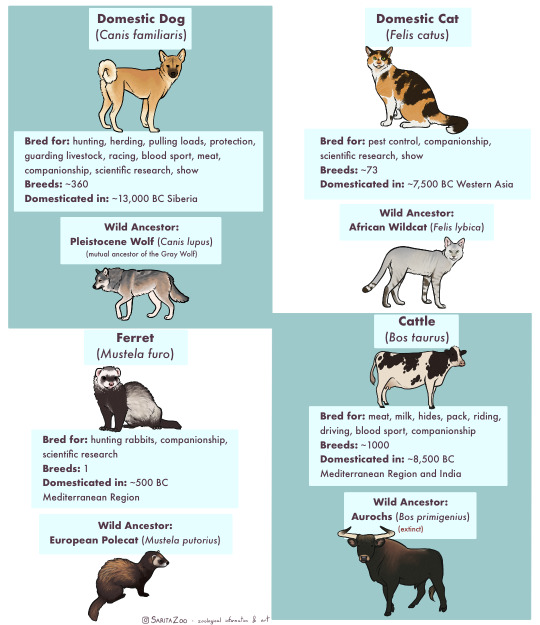


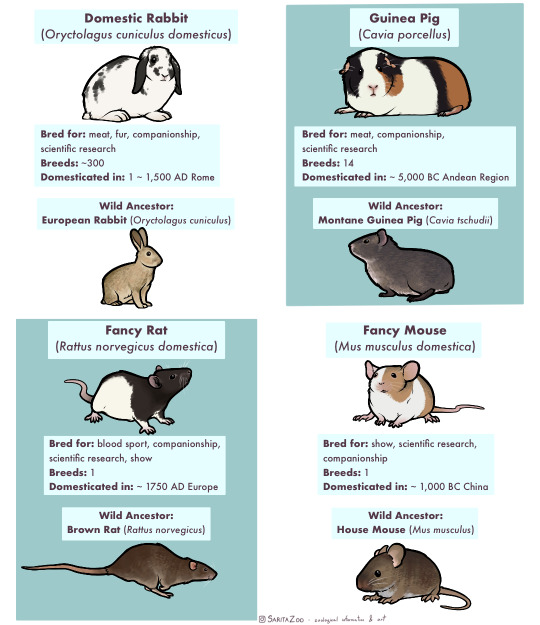
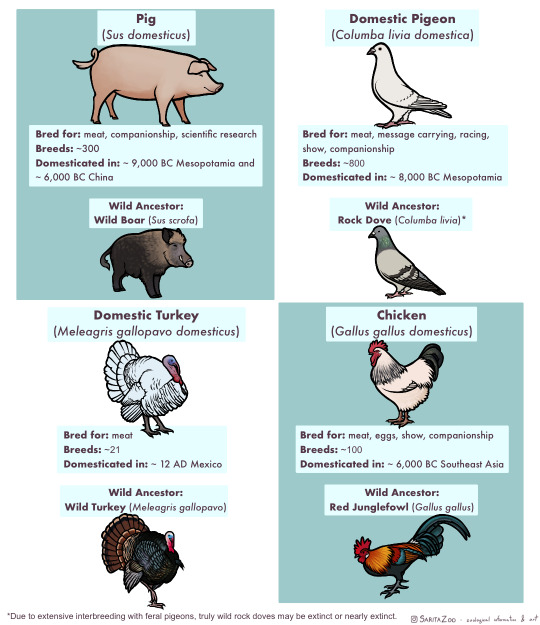
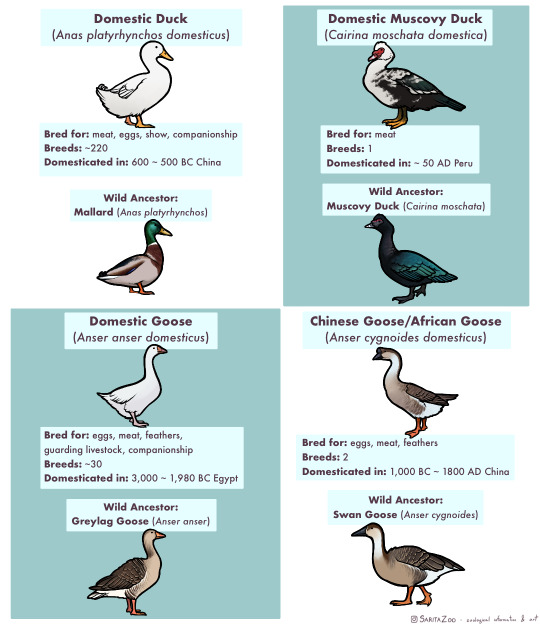
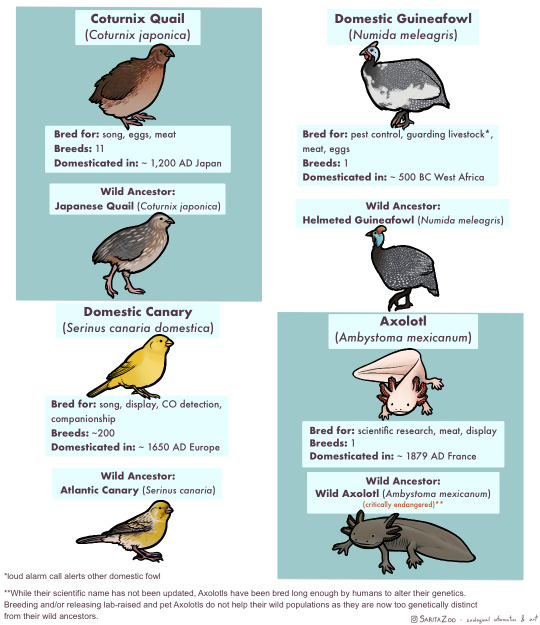
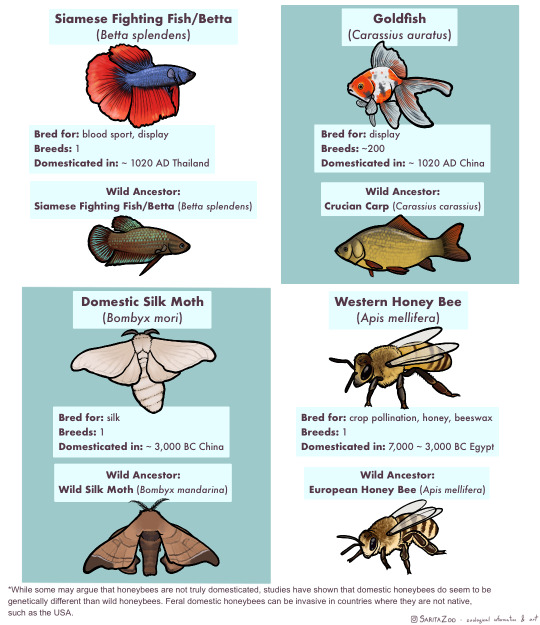

Phew. This one took, uh… a bit longer than expected due to other projects both irl and art-wise, but it’s finally here. The long-awaited domestic animal infographic! Unfortunately, I didn’t have enough space to cover every single domestic animal (I’m so sorry, reindeer and koi, my beloveds) but I tried to include as many of the “major ones” as possible.
I made this chart in response to a lot of the misunderstandings I hear concerning domestic animals, so I hope it’s helpful!
Further information I didn’t have any room to add or expand on:
🐈 “Breed” and “species” are not synonyms! Breeds are specific to domesticated animals. A Bengal Tiger is a species of tiger. A Siamese is a breed of domestic cat.
🐀 Different colors are also not what makes a breed. A breed is determined by having genetics that are unique to that breed. So a “bluenose pitbull” is not a different breed from a “rednose pitbull”, but an American Pitbull Terrier is a different breed from an American Bully! Animals that have been domesticated for longer tend to have more seperate breeds as these differing genetics have had time to develop.
🐕 It takes hundreds of generations for an animal to become domesticated. While the “domesticated fox experiment” had interesting results, there were not enough generations involved for the foxes to become truly domesticated and their differences from wild foxes were more due to epigenetics (heritable traits that do not change the DNA sequence but rather activate or deactivate parts of it; owed to the specific circumstances of its parents’ behavior and environment.)
🐎 Wild animals that are raised in human care are not domesticated, but they can be considered “tamed.” This means that they still have all their wild instincts, but are less inclined to attack or be frightened of humans. A wild animal that lives in the wild but near human settlements and is less afraid of humans is considered “habituated.” Tamed and habituated animals are not any less dangerous than wild animals, and should still be treated with the same respect. Foxes, otters, raccoons, servals, caracals, bush babies, opossums, owls, monkeys, alligators, and other wild animals can be tamed or habituated, but they have not undergone hundreds of generations of domestication, so they are not domesticated animals.
🐄 Also, as seen above, these animals have all been domesticated for a reason, be it food, transport, pest control, or otherwise, at a time when less practical options existed. There is no benefit to domesticating other species in the modern day, so if you’ve got a hankering for keeping a wild animal as a pet, instead try to find the domestic equivalent of that wild animal! There are several dog breeds that look and behave like wolves or foxes, pigeons and chickens can make great pet birds and have hundreds of colorful fancy breeds, rats can be just as intelligent and social as a small monkey (and less expensive and dangerous to boot,) and ferrets are pretty darn close to minks and otters! There’s no need to keep a wolf in a house when our ancestors have already spent 20,000+ years to make them house-compatible.
🐖 This was stated in the infographic, but I feel like I must again reiterate that domestic animals do not belong in the wild, and often become invasive when feral. Their genetics have been specifically altered in such a way that they depend on humans for optimal health. We are their habitat. This is why you only really see feral pigeons in cities, and feral cats around settlements. They are specifically adapted to live with humans, so they stay even when unwanted. However, this does not mean they should live in a way that doesn’t put their health and comfort as a top priority! If we are their world, it is our duty to make it as good as possible. Please research any pet you get before bringing them home!
38K notes
·
View notes
Text
WHY YOU SHOULD WRITE HORRIBLY:
1. You’ll never write anything if you don’t
228K notes
·
View notes
Text

the color signatures of various elements when ignited
FB image credit: Ceres Science
20K notes
·
View notes
Video
Eider ducks sound as though you’ve just told them a very interesting fact or juicy gossip.
173K notes
·
View notes
Text
Becoming a writer is great because now you have a hobby that haunts you whenever you don’t have time to do it
67K notes
·
View notes
Text
i always click the "track package" button as soon as i get the email. "oh boy i wonder where my package is!" warehouse.
82K notes
·
View notes
Text
things you DO NOT need to be a man
a dick
he/him pronouns
XY chromosomes
things you DO need to be a man
the swiftness of a coursing river
the force of a great typhoon
the strength of a raging fire
the mysteriousness of the dark side of the moon
^this post was brought to you by LGBT^
Let's
Get down to
Business
To defeat the huns
79K notes
·
View notes
Text
they should hold 4 versions of every olympic event in this order to witness the full breadth of human capabilities:
primary schoolers
random nonathletic adults
olympians
olympians roided and doped up to the max
70K notes
·
View notes
Text
You don’t realize how good you have it til you lose institutional JSTOR access
12K notes
·
View notes
Text
I just came up with a really inconvenient, possibly unplayable four-player game: The Evil Advisor
All you need is a completely normal chess board and a deck of cards that you can somehow divide into an even amount of cards that mean "yes" or "no". Out of the four players, only two need to know how to play chess - those play the role of advisor. The other two play as rulers. At the start of the game, both advisors pull a random card from the deck, which dictates whether their goal is to win the game, or lose it. They keep their respective card, showing it to nobody else.
The rulers, who ultimately choose where to move the pieces, always aim to win the chess game, and also know that the advisor may or may not be on their side, and don't know whether to trust the advisor or not.
If the ruler wins the chess game, they win the whole game. An advisor only wins if they reach their own goal - if an advisor's goal was to lose, but the ruler wins, the advisor loses, and vice versa.
19K notes
·
View notes
Text
193K notes
·
View notes
Photo
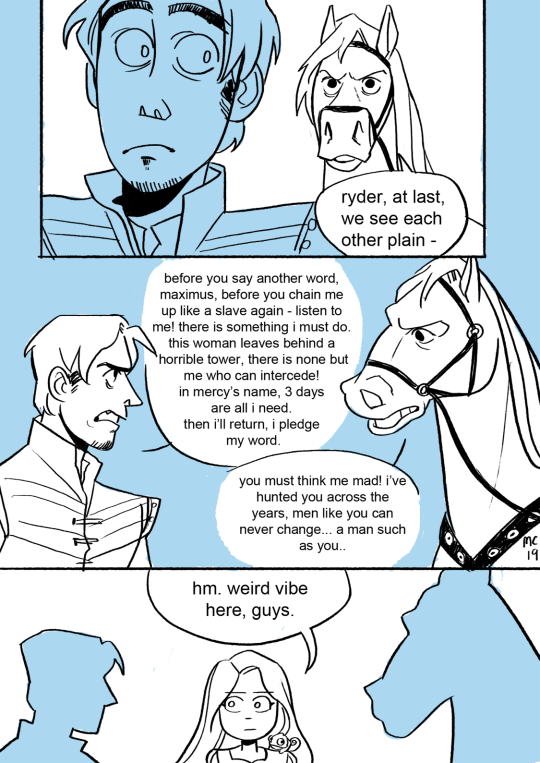
tangled gave us so much, but mostly it gave us the beautiful and intense love of a horse and the man he is chasing in order to imprison
100K notes
·
View notes
Text
The problem with having a child with an attorney that has spoken to the child like an adult since birth is that she's 4 years old and she's negotiating the order in which we're going to complete tasks as a family to best suit her idea of an ideal day.
23K notes
·
View notes
Text
59K notes
·
View notes
Text
'Badlands? I think they're quite 'good' actually.'
6K notes
·
View notes



